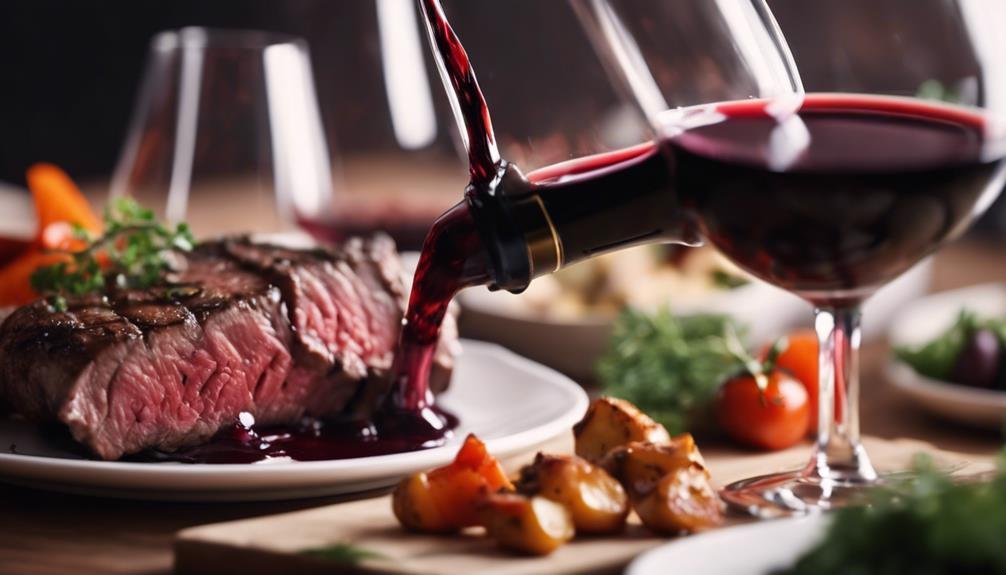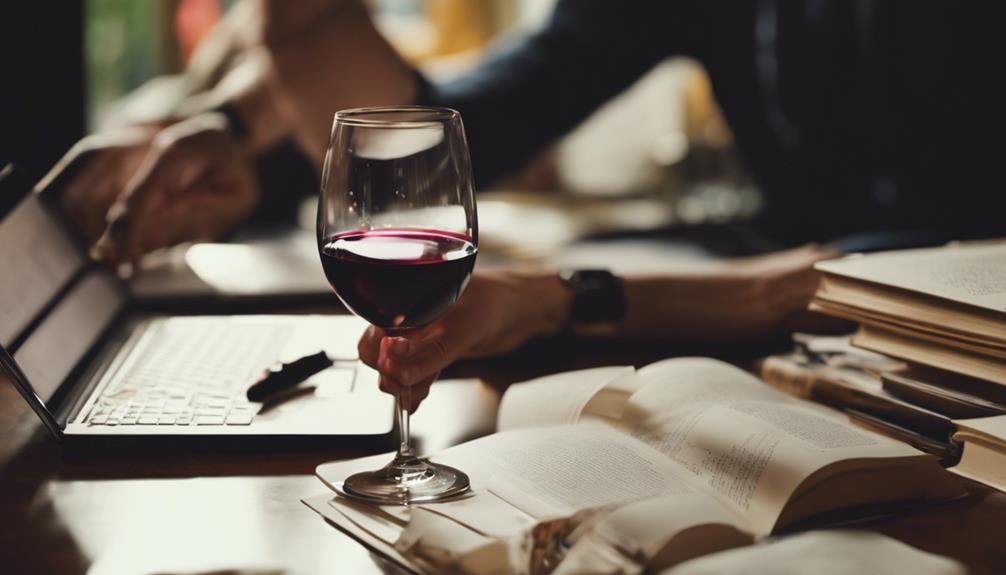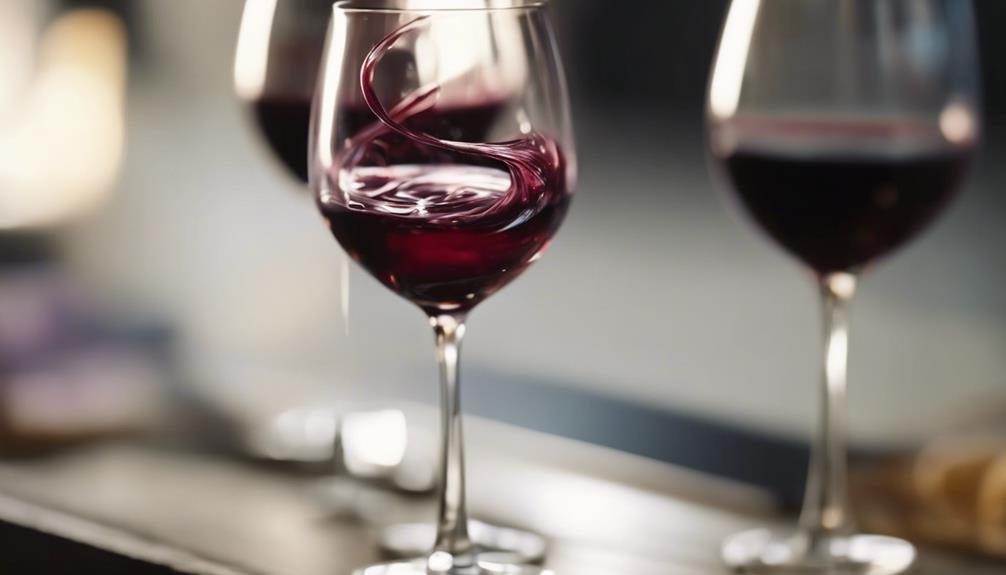Deciphering wine tasting lingo involves understanding key elements like fruit levels, sweetness scales, body characteristics, and finish types. Sweet wines feature flavors like peach, while savory wines offer earthy notes. The sweetness scale ranges from bone dry to dessert sweet wines, with dessert wine varieties like late harvest Riesling. Light-bodied wines pair with delicate dishes, while full-bodied wines complement richer foods. Identifying finish types—bitter, fruity, complex—gives insights into a wine's final impressions. Utilize additional resources such as the Wine Folly Book for a deeper wine education. Enhance your wine tasting experience by grasping these essential concepts.
Fruit Level and Flavor Profile
When exploring the world of wine tasting, understanding the fruit level and flavor profile is essential for discerning the nuances of different varietals.
Sweet wines often exhibit flavors like ripe peach and mango, offering a fruit-forward experience, while savory wines lean towards earthy and herbaceous notes such as olive and green bell pepper.
Bold wines pack a punch with intense flavors like blackberry and jam, appealing to those who enjoy a robust palate sensation.
On the other hand, delicate wines offer subtle and elegant profiles, with hints of flavors like baked apple and mandarin orange.
Recognizing these distinctions between sweet vs. savory and bold vs. delicate can enhance your wine tasting experience by helping you appreciate the diversity of flavors within each glass.
Sweetness Scale and Varieties
Understanding the sweetness scale and the different varieties of wines available provides valuable insight into the diverse range of flavors and profiles that can be experienced during wine tasting sessions.
When exploring the sweetness of wines, it is important to take into account various types of sweetness levels, ranging from bone dry to dessert sweet wines. Each type offers a unique taste experience, making it vital to match them with suitable dessert pairings.
Some dessert wine varieties to contemplate include late harvest Riesling, Port, and Sauternes. These wines are known for their rich sweetness and can be perfectly paired with desserts like fruit tarts, chocolate mousse, or crème brûlée to enhance the overall tasting experience.
Body Characteristics and Pairings

Exploring the body characteristics of wines and their ideal food pairings offers a thorough understanding of how flavor profiles interact during wine tasting sessions. When considering food pairings, it's vital to match the body of the wine with the weight of the dish. Light-bodied wines complement delicate dishes, while full-bodied wines stand up well to heavier, richer foods. Additionally, texture pairings play an important role in enhancing the overall dining experience. Here is a table summarizing the key points:
| Body Characteristics | Ideal Food Pairings |
|---|---|
| Light-Bodied | Grilled fish, salads, soft cheeses |
| Medium-Bodied | Roast chicken, pasta with cream sauce, pork chops |
| Full-Bodied | Grilled steak, braised short ribs, aged cheeses |
Understanding these pairings can elevate your enjoyment of both the wine and food.
Finish Types and Tasting Notes
Finish types and tasting notes provide valuable insights into the final impressions a wine leaves on the palate, offering a nuanced understanding of its overall character. When exploring these elements, you may encounter the following:
- Bitter Finish: Astringent, harsh, or rough sensations that linger after each sip.
- Fruity Aromas: Scents reminiscent of fresh fruits such as berries, citrus, or tropical fruits, adding a vibrant and juicy quality to the wine.
- Complex Undertones: Subtle hints of spices, herbs, or earthy notes that contribute to the wine's depth and complexity.
Additional Wine Tasting Resources

Amplify your wine tasting experience with a curated selection of supplementary resources tailored to enhance your knowledge and appreciation of different varietals. Below is a table highlighting key resources for mastering tasting techniques, sensory analysis, wine pairing, and food recommendations:
| Resource | Description | Benefits |
|---|---|---|
| Wine Folly Book | In-depth guide with over 2x more content in the new edition. Suitable for all levels. | Valuable resource for wine education |
| Madeline Puckette Info | James Beard Award-winning author and Wine Communicator of the Year. Co-founder of Wine Folly. | Expert insights in the wine industry |
| Newsletter Subscription | Free subscription for updated wine trends and informative content. | Stay informed about the wine world |
Frequently Asked Questions
How Can I Improve My Sense of Smell for Wine Tasting?
To enhance your sense of smell for wine tasting, engage in aromatherapy techniques and sensory exercises. Incorporate smell training to refine your flavor perception. By practicing these methods consistently, you can develop a more discerning olfactory palate for evaluating wines accurately.
What Foods Can Enhance the Flavors of a Full-Bodied Wine?
Enhancing the flavors of a full-bodied wine can be achieved through thoughtful pairings. Consider the richness of cheese or the complexity of charcuterie to complement, the decadence of chocolate, or the zing of spicy dishes.
Are There Any Tips for Avoiding a Bitter Finish in Wine?
When aiming to prevent a bitter finish in wine, concentrate on achieving flavor balance through proper wine pairing. Consider taste perception to guarantee a harmonious experience. Experiment with complementary food choices to counteract bitterness and enhance overall enjoyment.
How Can I Differentiate Between Tannic and Acidic Finishes?
Differentiating between tannic and acidic finishes involves recognizing key characteristics. Tannin imparts a drying, grippy sensation, while acidity delivers a tart, zesty quality. Understanding these flavor profiles enhances wine appreciation by distinguishing textural nuances and taste sensations effectively.
What Are the Benefits of Subscribing to the Wine Folly Newsletter?
Subscribing to the Wine Folly newsletter offers wine enthusiasts valuable insights on wine pairings, tasting notes, and upcoming events. Stay informed with engaging content, updated trends, and educational resources, making it a must-have subscription for any wine aficionado.
Conclusion
To sum up, grasping the intricate language of wine tasting is essential for enthusiasts and professionals alike.
Did you know that there are over 10,000 different grape varieties used in winemaking around the world?
By familiarizing yourself with the terminology and nuances of wine tasting, you can enhance your appreciation of the complex flavors and characteristics found in every glass.
Explore the diverse vocabulary of wine tasting and elevate your sensory experience with confidence.
